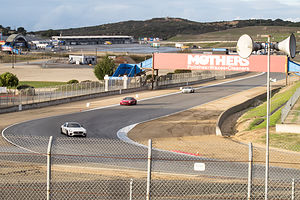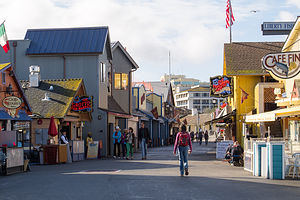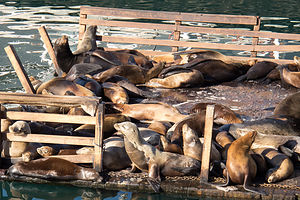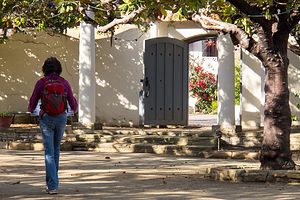- Home
- About
- Map
- Trips
- Bringing Boat West
- Migration West
- Solo Motorcycle Ride
- Final Family XC Trip
- Colorado Rockies
- Graduates' XC Trip
- Yosemite & Nevada
- Colorado & Utah
- Best of Utah
- Southern Loop
- Pacific Northwest
- Northern Loop
- Los Angeles to NYC
- East Coast Trips
- Martha's Vineyard
- 1 Week in Quebec
- Southeast Coast
- NH Backpacking
- Martha's Vineyard
- Canadian Maritimes
- Ocracoke Island
- Edisto Island
- First Landing '02
- Hunting Island '02
- Stowe in Winter
- Hunting Island '01
- Lake Placid
- Chesapeake
- Provincetown
- Hunting Island '00
- Acadia in Winter
- Boston Suburbs
- Niagara Falls
- First Landing '99
- Cape Hatteras
- West Coast Trips
- Burning Man
- Utah Off-Roading
- Maui
- Mojave 4WD Course
- Colorado River Rafting
- Bishop & Death Valley
- Kauai
- Yosemite Fall
- Utah Off-Road
- Lost Coast
- Yosemite Valley
- Arizona and New Mexico
- Pescadero & Capitola
- Bishop & Death Valley
- San Diego, Anza Borrego, Joshua Tree
- Carmel
- Death Valley in Fall
- Yosemite in the Fall
- Pacific Northwest
- Utah Off-Roading
- Southern CA Deserts
- Yosemite & Covid
- Lake Powell Covid
- Eastern Sierra & Covid
- Bishop & Death Valley
- Central & SE Oregon
- Mojave Road
- Eastern Sierra
- Trinity Alps
- Tuolumne Meadows
- Lake Powell Boating
- Eastern Sierra
- Yosemite Winter
- Hawaii
- 4WD Eastern Sierra
- 4WD Death Valley +
- Southern CA Deserts
- Christmas in Tahoe
- Yosemite & Pinnacles
- Totality
- Yosemite & Sierra
- Yosemite Christmas
- Yosemite, San Diego
- Yosemite & North CA
- Seattle to Sierra
- Southwest Deserts
- Yosemite & Sierra
- Pacific Northwest
- Yosemite & South CA
- Pacific Northwest
- Northern California
- Southern Alaska
- Vancouver Island
- International Trips
- Index
- Tips
- Books
- Photos/Videos
- Search
- Contact
Monterey, CA
Thursday, November 20, 2014 - 12:15pm by Lolo
240 miles and 4.5 hours from our last stop - 1 night stay
Travelogue
 Campsite view at Laguna Seca RacewayIt was Thursday, and we had to be in Sebastopol on Friday night for the start of a pre-Thanksgiving weekend celebration with Andrew and his girlfriend’s family, so we started heading up 101 with the intention of spending the night in or around Monterey.
Campsite view at Laguna Seca RacewayIt was Thursday, and we had to be in Sebastopol on Friday night for the start of a pre-Thanksgiving weekend celebration with Andrew and his girlfriend’s family, so we started heading up 101 with the intention of spending the night in or around Monterey.
Although Carmel would have been nice, we didn’t feel we had enough time to do it justice. We would save that for a later trip where we could spend a few days. Instead we chose to camp at the Laguna Seca Recreation Area, about 6 ½ miles inland from Monterey, literally overlooking the famous Laguna Seca Raceway. Herb was surprised that I never heard of the Laguna Seca Raceway, but I am not exactly a NASCAR fan. He said it knew it because it was one of the choices for a race track when he used to play Nintendo racing car games with the boys when they were little.
Although there was no race going on – and if there was, I am sure we would not have been able to get a campsite – it was fun to watch four cars practicing and racing around the track.
 Lolo on Fisherman's WharfThe next morning we drove into Monterey to explore a little. Since we only had a couple of hours, we didn’t go to the world famous Monterey Aquarium, because if you are going to spend $40 each for admission, you should plan to at least spend half a day. We would do that when we on a future trip to this lovely part of the California coast.
Lolo on Fisherman's WharfThe next morning we drove into Monterey to explore a little. Since we only had a couple of hours, we didn’t go to the world famous Monterey Aquarium, because if you are going to spend $40 each for admission, you should plan to at least spend half a day. We would do that when we on a future trip to this lovely part of the California coast.
You can’t come to Monterey and not visit Fisherman’s wharf, one of the most popular tourist attractions in Monterey. I kind of like tourist traps sometimes – after all, they are popular for a reason. Besides, I have never met a wharf I didn’t like. We ignored the seafood restaurants and souvenir shops and spent our time watching carefree sea lions lounge on a dock just off the pier.
Right by the entrance to the wharf is the old Custom House and the beginning of the 2-mile, self-guided Monterey “Walking Path of History.” It’s part of the Monterey State Historic Park. We are history buffs, but having lived on the East Coast our entire lives we know a lot more about the American Revolution and Civil War than the history of California statehood. We’re planning on moving out here someday soon, so we do try, whenever possible, to learn more about California’s Spanish, Mexican, and early statehood past.
 Fisherman's Wharf Sea LionsUnfortunately, tours of the historical homes and buildings along the path are only given on the weekend (at least this time of year), but we were able to wander around them and peek in their windows.
Fisherman's Wharf Sea LionsUnfortunately, tours of the historical homes and buildings along the path are only given on the weekend (at least this time of year), but we were able to wander around them and peek in their windows.
The first building we peeked into was the Customs House. Besides being the oldest government building in California, it also played an important role in California’s statehood in that it was the site where Commodore Sloat raised the American flag in July of 1846 and declared California to be a part of the United States. It was kind of like our Lexington and Concord.
Other buildings we peeked into included: an old tavern that was converted into California’s first theater, the first house in California to be built out of brick first brick house rather than sun-dried mud, and the beautiful Casa Soberanes.
There was much more to explore and do in the Monterey area, but that would have to wait for a future visit.
Description
 Lolo on the Walking Path of HistoryMonterey is a very popular waterfront community located on the central coast of California. It is home to the world-famous Monterey Bay Aquarium located in Cannery Row, where John Steinbeck drew his inspiration for the novel of that name. No longer a place for canning sardines, today’s Cannery Row is lined with hotels, and restaurants, and shops.
Lolo on the Walking Path of HistoryMonterey is a very popular waterfront community located on the central coast of California. It is home to the world-famous Monterey Bay Aquarium located in Cannery Row, where John Steinbeck drew his inspiration for the novel of that name. No longer a place for canning sardines, today’s Cannery Row is lined with hotels, and restaurants, and shops.
Another popular destination in Monterey is Fisherman’s Wharf, where one is sure to see sea lions hanging out on the pilings and buoys in the bay. The wharf was an active wholesale fish market into the 1960s, but today it is a major tourist attraction with seafood restaurants, souvenir shops, and art galleries. It is also the place to hop aboard a deep-sea fishing or whale-watching trip.
At the entrance to the wharf is Custom House Plaza, and the start of a 2-mile self-guided walking tour of historical Monterey. Along the 2-mile "Path of History," you will find the Custom House, the first government building in California, and the Monterey Maritime Museum.
Monterey’s year-round temperate climate makes it a popular place for beaching, surfing, kayaking, and scuba driving.
- ‹ previous
- 9 of 13
- next ›
Monterey location map in "high definition"
Javascript is required to view this map.
